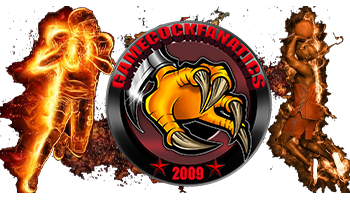The Presbyterian coach may have referenced Clemson's Tiger Stadium as 'Death Valley" in 1948 but it didn't stick until Frank Howard started using it sometime in the 50's.
That said ... the place really IS 'Death Valley" - John C. Calhoun began burying slaves from his plantation at the top of the hill immediately south of the stadium site 200 years ago; and he buried his son's infant daughter there in a 70' X 68' 'family plot' that was marked off in the 1830's, the first 'white' body buried in the area.
For another 100 years occasional burials continued until Clemson University created 'Woodland Cemetery' on the site in 1924, incorporating their 'University Cemetery' (for employees and their families) into the Calhoun family plot. It was expanded in the 50's and is located IMMEDIATELY adjacent to the stadium (not even 50 yards away) ... and until the upper decks were built you could actually look 'down' and see the playing surface from the cemetery.
Many, many 'forced labor' road-gang convicts utilized to build a substantial number of Clemson's early buildings are also buried adjacent to the football stadium; in both the 'family plot' and the 'slave plot' - which are all together today.
Woodland Cemetery is one of the reasons the 'smell' in the air is sometimes 'a little' OFF up at Clemson - you've often got dead fish from the lake up on the mud banks to the west, which routinely die for no 'apparent' reason, abandoned and still-leaking underground storage tanks at the Esso Club on the north side, the methane gas that comes from east of the stadium due to all those students who are full of @#$% and all those corpses leaching down through hundreds of subterranean capillary trails on the stadium's south border to help keep the stadium turf nice and green.
That said ... the place really IS 'Death Valley" - John C. Calhoun began burying slaves from his plantation at the top of the hill immediately south of the stadium site 200 years ago; and he buried his son's infant daughter there in a 70' X 68' 'family plot' that was marked off in the 1830's, the first 'white' body buried in the area.
For another 100 years occasional burials continued until Clemson University created 'Woodland Cemetery' on the site in 1924, incorporating their 'University Cemetery' (for employees and their families) into the Calhoun family plot. It was expanded in the 50's and is located IMMEDIATELY adjacent to the stadium (not even 50 yards away) ... and until the upper decks were built you could actually look 'down' and see the playing surface from the cemetery.
Many, many 'forced labor' road-gang convicts utilized to build a substantial number of Clemson's early buildings are also buried adjacent to the football stadium; in both the 'family plot' and the 'slave plot' - which are all together today.
Woodland Cemetery is one of the reasons the 'smell' in the air is sometimes 'a little' OFF up at Clemson - you've often got dead fish from the lake up on the mud banks to the west, which routinely die for no 'apparent' reason, abandoned and still-leaking underground storage tanks at the Esso Club on the north side, the methane gas that comes from east of the stadium due to all those students who are full of @#$% and all those corpses leaching down through hundreds of subterranean capillary trails on the stadium's south border to help keep the stadium turf nice and green.

